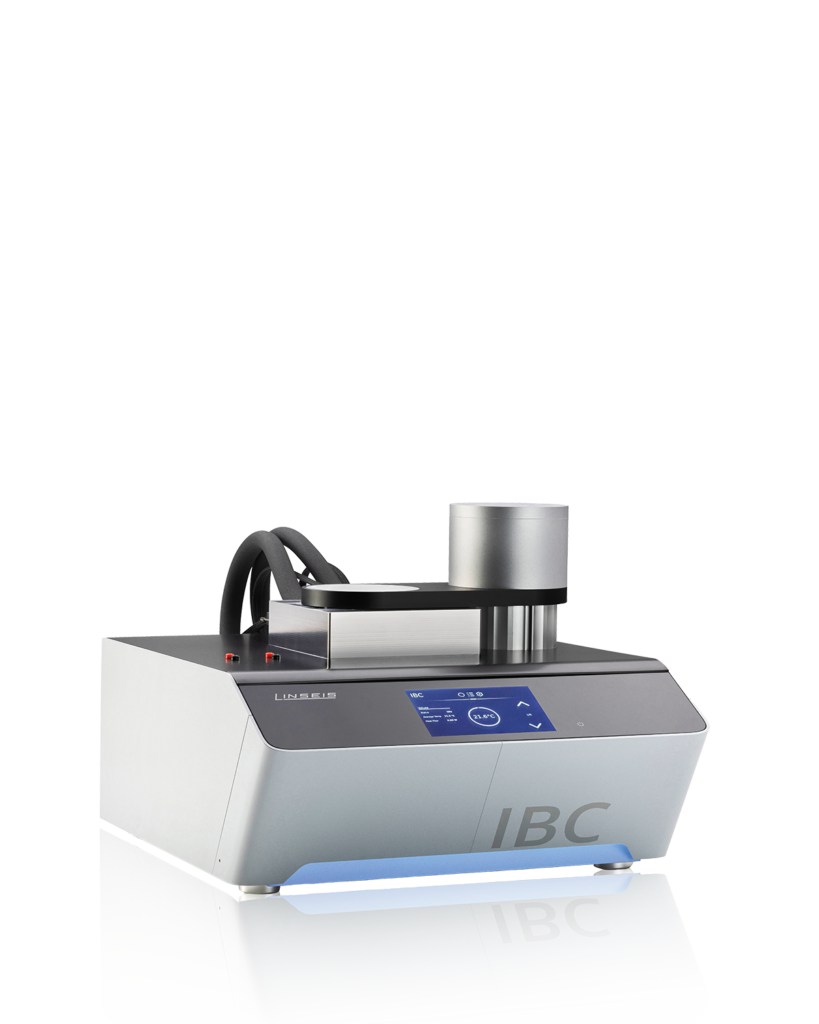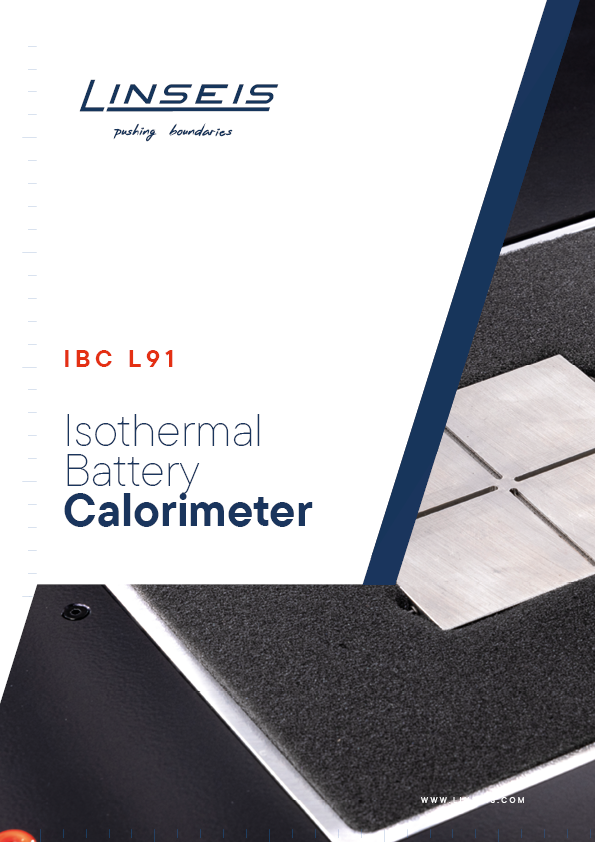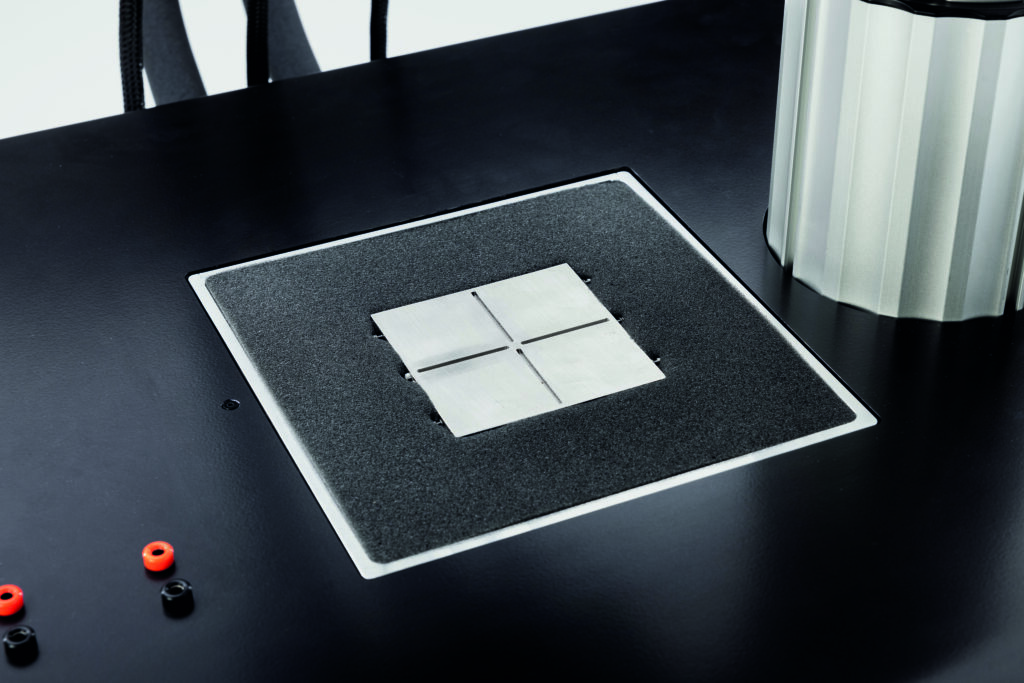Description
To the point
Our battery calorimeter (LINSEIS IBC L91 – Isothermal Battery Calorimeter) is a device for measuring the heat generated by a battery during charging and discharging.
This released heat is an important indicator of the performance and current operating status of a cell or battery pack. Depending on the chemical composition, design and size of the cell, but also depending on the current state of charge and the ambient conditions, the amount of heat generated can vary.
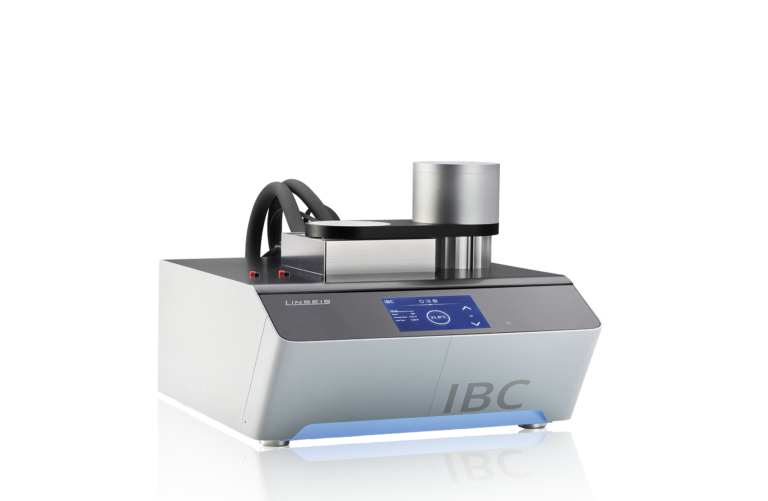
- Why battery calorimetry matters
Battery calorimeters precisely measure the heat generated during electrochemical reactions – a key parameter for evaluating thermal behavior, safety and efficiency of battery cells and modules. - Targeted applications
These systems are essential for the development and qualification of advanced battery technologies such as lithium-ion, solid-state and next-generation chemistries. They are also widely used in quality assurance, abuse testing and safety validation for commercial and automotive batteries. - Thermal Analysis for safety
By analyzing heat generation under defined charge/discharge conditions or extreme scenarios, battery calorimeters enable the detection of early-stage thermal risks, including thermal runaway, cell venting or reaction onset temperatures – all critical for regulatory compliance and end-user safety. - Optimizing battery performance
Accurate thermal data provides deep insight into internal cell chemistry and design parameters. This allows for the optimization of energy density, fast-charging behavior, cycle life and overall system stability. - Enabling Innovation in R&D
Battery calorimeters are indispensable tools in research and development – from evaluating new materials and binders to testing full-cell assemblies under realistic thermal profiles. The insights gained drive innovation across the energy storage industry.
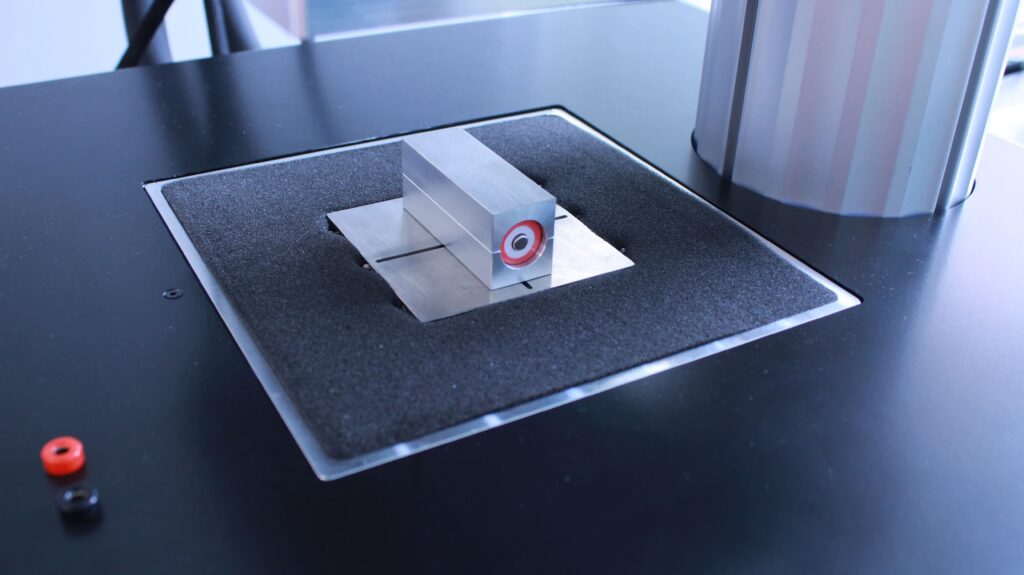

Comprehensive
battery measurements

Analysis of the
heat development

Optimization of the
battery performance

Measurements on the
longevity of batteries
Unique features
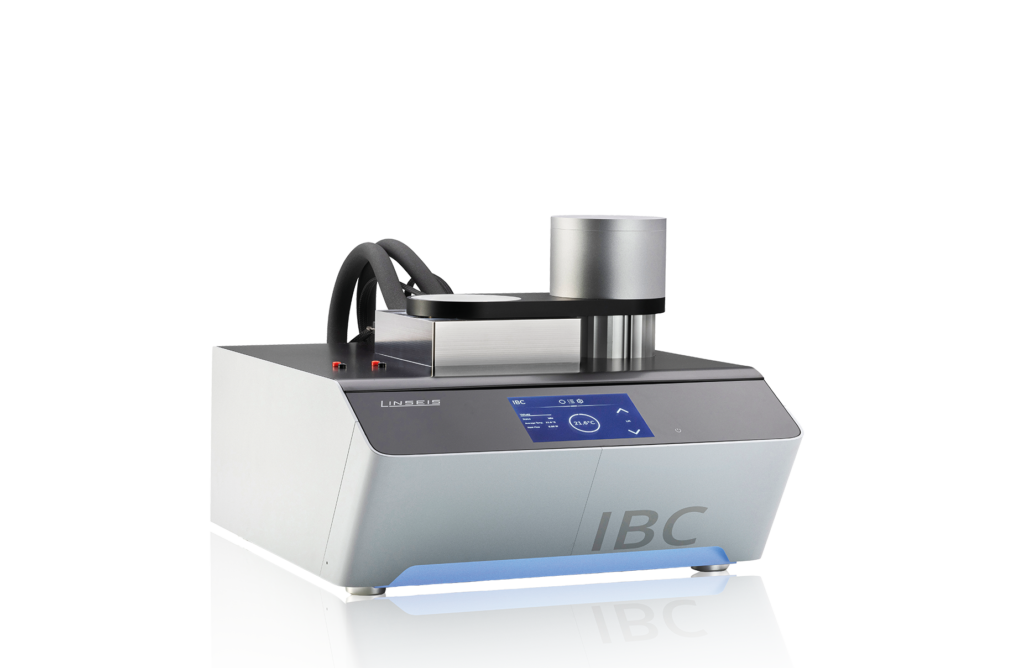
Modular design:
Adaptable for different battery
cell sizes and geometries.
High-precision measurements:
Calorimetric resolution of
0.1 mW and accuracy of 0.5 mW.
Wide temperature range:
Measurements from -40°C to
140°C with high temperature
stability and accuracy.
Versatile application possibilities:
Analysis of heat development, optimization of
battery performance, and measurements of longevity.
Expandable sensors and adapters:
Adaptable for different cell types
such as 14500, 18650, coin cells.
Questions? We're just a call away!
+1 (609) 223 2070
+49 (0) 9287/880 0
Our service is available Monday to
Thursday from 8 am to 4 pm
and Friday from 8 am to 12 pm.
We are here for you!
Specifications
Hard Facts
MODEL | IBC L91 |
|---|---|
| Measuring cell | |
| Measuring plate | 80 x 80 mm 300 x 300 mm 600 x 600 mm others on request |
| Sample height | up to 100 mm |
| Measuring range | max. 10W (for 80 x 80 mm measuring plate) |
| Calorimetric resolution | 0.1 mW |
| Calorimetric accuracy | 0.5 mW |
| Temperature dimensional resolution | 8 sensors (for 80 x 80 mm measuring plate) |
| Additional temperature sensors | Available on request |
| Heat flux dimensional resolution | 8 sensors (for 80 x 80 mm measuring plate) |
| Cell adapter | Available for 14500, 18650, coin cell, on request |
| Sampling rate | Up to 10 Hz |
| Calibration | Integrated automatic calibration procedure, calibration heater |
| Noise | 0.015 mV |
| Environmental conditions / temperature options | |
| Temperature range | -40 °C to 90 °C |
| Temperature stability | 0.01 K |
| Temperature resolution | 0.0001 °C |
| Temperature accuracy | 0.001 °C |
| Electrical specification | |
| Power supply | AC 230 V / 50 Hz |
| Maximum power consumption | 120 W (main unit) |
| Display | Yes |
| Charging current | Depending on customer selection |
| Charging voltage | Depending on customer selection |
| Discharge voltage | Depending on customer selection |
| Battery charges | On request |
| Laboratory power supply | On request |
| Software functions | Linsels Platinum Software (free of charge) |
| Software functions | Automatic calibration mode, heat flow correction, powerful evaluation software with calorimetric tools |
Software
Making values visible and comparable
The IBC L91 operates with two precision-calibrated measurement plates, featuring eight heat flux sensors and ten temperature sensors in its compact base configuration (80 mm × 80 mm).
This layout ensures stable ambient conditions and minimal thermal losses for all sample types. The measurement cell is available in multiple sizes – 80 mm × 80 mm, 300 mm × 300 mm, and 600 mm × 600 mm – and can also be custom-designed to meet specific customer requirements.
The system’s open-access architecture allows seamless integration with virtually any charger, electronic load or power supply. All measurement data and protocols can be imported into the Linseis Platinum Software, enabling synchronized evaluation of both thermal and electrical battery behavior.
In addition to the flat-plate setup, the IBC L91 supports dedicated adapters for cylindrical cells (e.g., 18650, 14500) as well as coin cells, ensuring full flexibility for a wide range of battery formats.
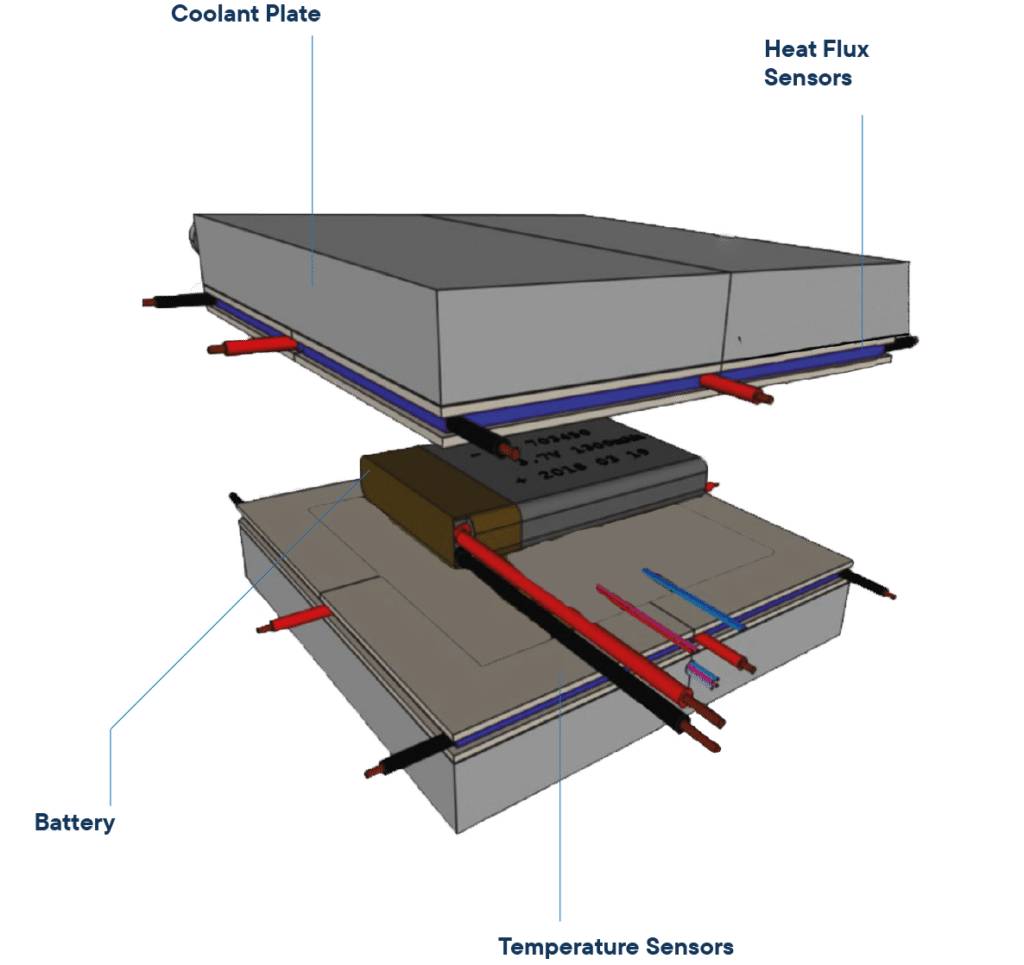
Applications
The Linseis IBC L91 enables in-depth investigation of batteries under real-world and controlled conditions. It offers precise thermal insight across a wide range of test scenarios, including:
✔️ Variable temperature environments
✔️ Aging and long-term degradation behavior
✔️ Evaluation of thermal efficiency in cells and electronics
✔️ Compatibility with various battery chemistries
✔️ Support for multiple cell formats (pouch, coin, cylindrical, prismatic)
✔️ Detection of phase transitions during operation
Application example: Heat flow analysis during battery cycling
This example illustrates the heat flow behavior of a single-cell lithium-ion battery under varying charge and discharge currents. The measurement provides valuable insights into the thermal stress the cell experiences during cycling.
Key parameters such as cell voltage, charge/discharge current, and the resulting heat flow are continuously recorded and visualized. Additionally, calculated metrics such as charging/discharging power and the real-time cell temperature are tracked, enabling comprehensive analysis and documentation of the battery’s thermal and electrical behavior.
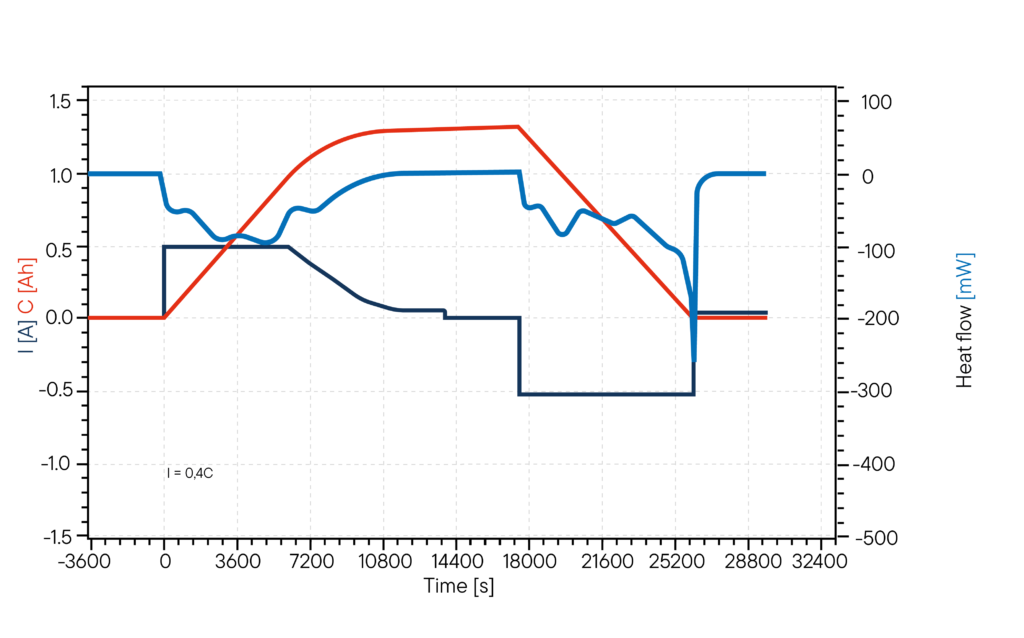
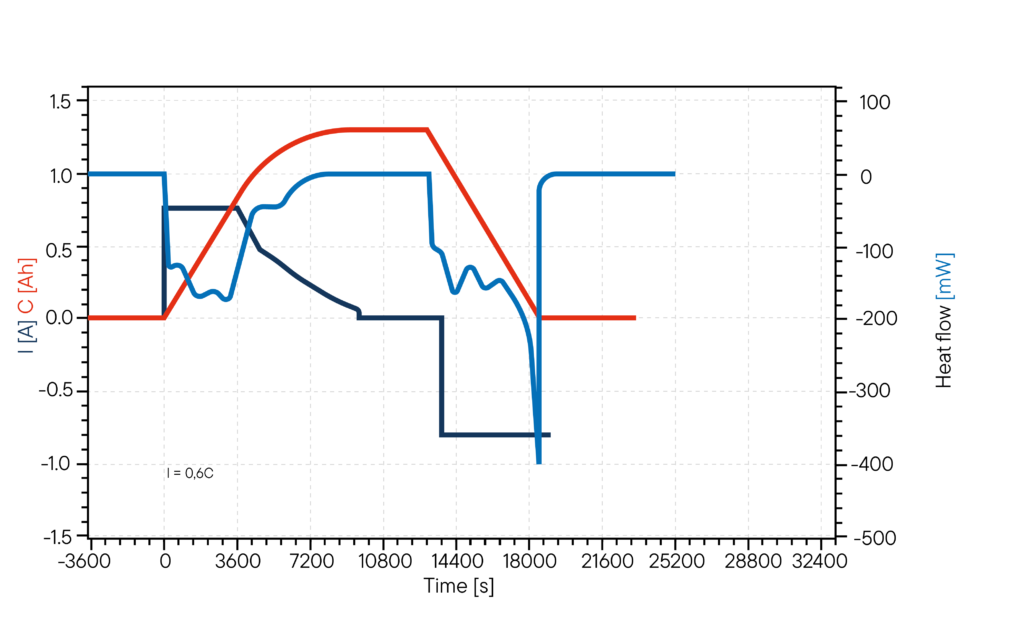
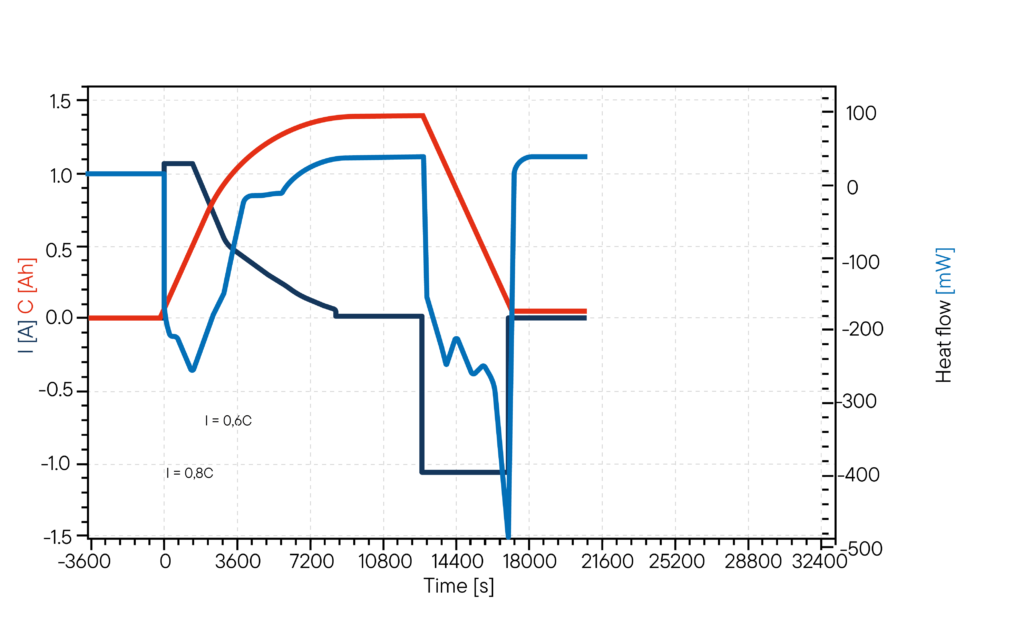
Application example: Heat flow analysis vs. battery capacity
This application showcases the heat flow behavior of a single-cell lithium-ion battery under varying charge and discharge currents. The data highlights efficiency differences between charging strategies, depending on the battery’s state of charge and capacity.
A key observation is the variation in residual capacity under different discharge conditions. Additionally, a notable increase in heat generation is observed at higher charge and discharge currents, indicating greater thermal stress and potential impact on long-term battery performance.
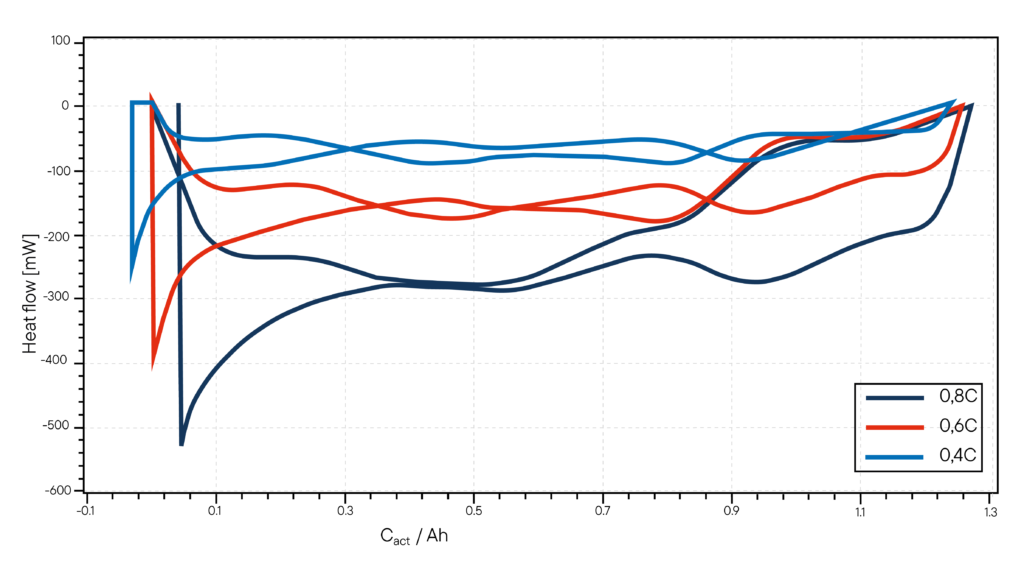
Well informed
